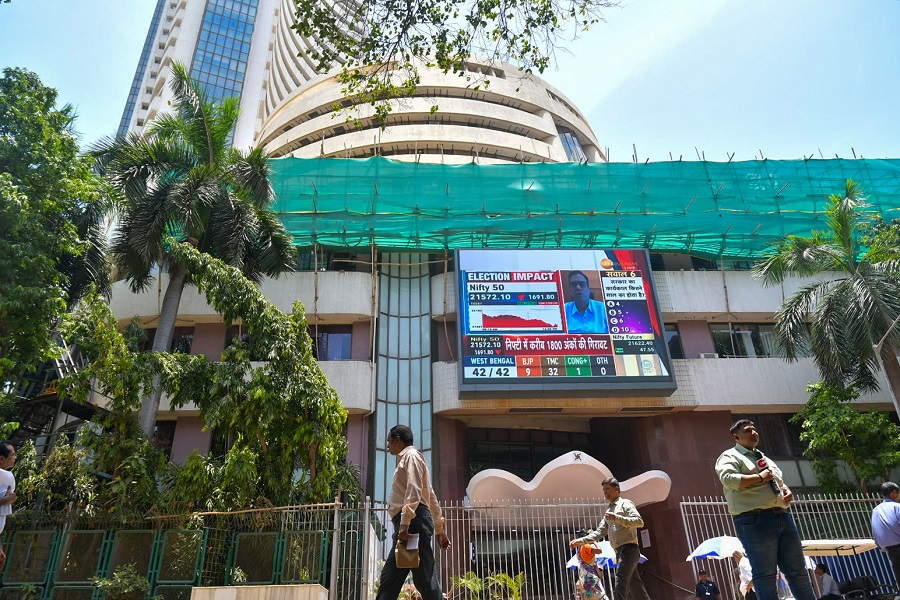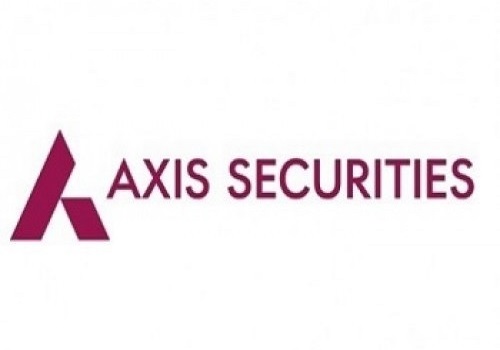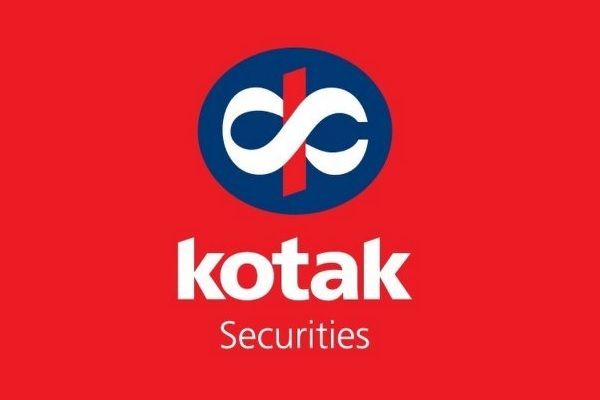Gold trading range for the day is 56295-57055 - Kedia Advisory

Gold
Gold prices saw a slight decline of -0.2%, settling at 56608, as investors reacted to new US economic data. Federal Reserve policymakers Bowman and Mester hinted at the possibility of another rate hike this year, while Bostic suggested that interest rates might need to stay high for a longer duration. This pushed the US dollar to its highest level in around 10 months against other currencies and raised the yield on 10-year US bonds to levels not seen since 2007. The resilience of the US private sector, as indicated by strong services ISM PMI figures and manufacturers' surveys, supported the case for the Fed's restrictive stance on monetary policy. However, job data presented a mixed picture, with job openings increasing to 9.61 million but the ADP report showing the smallest job growth by US private employers since January 2021. The US services sector slowed in September, with new orders hitting a nine-month low, although overall economic growth for the third quarter remained on track. The SPDR Gold Trust reported a 0.5% decrease in its holdings to 869.31 tonnes on Wednesday. From a technical perspective, the market witnessed fresh selling, with open interest increasing by 2.32% to 16361, while prices fell by -113 rupees. Gold is currently supported at 56450, with the potential to test 56295 levels if it drops below this point. Resistance is expected at 56830, and a breakthrough could lead to testing 57055 levels.
Trading Ideas:
* Gold trading range for the day is 56295-57055.
* Gold steadied as investors continued to digest fresh US economic data.
* Fed policymakers Bowman and Mester flagged the possibility of another rate hike this year
* Fed Bostic warned that the funds rate will need to remain at the terminal level for longer.
Silver
Silver prices saw a slight decline of -0.17%, settling at 66768, as traders reconsidered the future of interest rates. Initial jobless claims in the US rose moderately last week, but overall, layoffs decreased in September, indicating a still tight job market at the end of the third quarter. The economy's prospects improved with a shrinking trade deficit in August, the narrowest in nearly three years, and record-high exports of capital goods. Despite significant interest rate hikes by the Federal Reserve to cool demand, the US economy has held up well. However, there were mixed signals in the job market as US private-sector employers added the fewest jobs in September since January 2021, but this helped ease concerns about high interest rates. Fed policymakers Bowman and Mester suggested the possibility of another rate hike this year, while Bostic indicated that interest rates may need to remain high for an extended period. From a technical perspective, the market experienced fresh selling, with open interest increasing by 4.07% to 31896, while prices fell by -117 rupees. Silver currently finds support at 66335, with the potential to test 65895 levels if it falls below this point. Resistance is expected at 67410, and a breakthrough could lead to testing 68045 levels.
Trading Ideas:
# Silver trading range for the day is 65895-68045.
# Silver dropped as traders reassessed the path of interest rates.
# The number of Americans filing new claims for unemployment benefits rose moderately last week
# U.S. private-sector employers added 89,000 jobs in September, the fewest since January 2021
Crude oil
Crude oil prices fell by -2.04% to settle at 6920, primarily due to concerns over lower demand, which overshadowed tight supply conditions. The oil market was also impacted by the anticipation of continued high-interest rates. Recent data from the EIA revealed a significant increase in gasoline stocks in the US, the largest since early 2022. On the supply side, OPEC+ decided to maintain its current oil output policy, with Saudi Arabia and Russia extending voluntary supply cuts until year-end. Russia further stated that there was no specific deadline for lifting fuel export restrictions introduced in September, intending to keep them in place as long as necessary. In the US, crude stocks at the Cushing, Oklahoma storage hub increased for the first time in eight weeks, rising by approximately 130,000 barrels to 22.1 million barrels. However, overall US crude oil stocks fell to 414.1 million barrels, the lowest level since December 2022. US crude oil production in July reached levels close to pre-COVID peaks in 2019, driven by record production in Texas, the leading US shale oil producer, according to the US Energy Information Administration. From a technical standpoint, the market experienced long liquidation, with open interest dropping by -0.33% to 12428, while prices decreased by -144 rupees. Crude oil currently finds support at 6828, with the potential to test 6736 levels if it falls below this point. Resistance is expected at 7051, and a breakthrough could lead to testing 7182 levels.
Trading Ideas:
* Crudeoil trading range for the day is 6736-7182.
* Crude oil fell as concerns about lower demand offset tight supplies.
* EIA data showed that gasoline stocks in the US rose the most since the first week of 2022
* OPEC+ made no changes to the group's oil output policy, following Saudi Arabia and Russia's decision to extend voluntary supply cuts
Natural gas
Natural gas prices surged by an impressive 6.19% to settle at 265.8, primarily due to ongoing concerns about dwindling supply. In recent data from the EIA, US utilities added 86 billion cubic feet of gas to storage in the last week of September, which was slower than the prior week and missed market expectations. This highlighted the strain on available supply, especially as average output in the lower 48 states dipped in October. Adding to the bullish sentiment was the upcoming launch of the New Fortress Energy LNG export plant, raising hopes for foreign sales and consequently reducing domestic supply. However, the total volume of natural gas supplied to major US LNG export plants remained relatively steady in October, falling short of previous record levels. On the weather front, meteorologists predicted near-normal conditions in the lower 48 states through October 20th. Furthermore, LSEG forecasted an increase in US gas demand, including exports, as seasonal cooling boosts heating demand. From a technical perspective, the market witnessed fresh buying, with open interest increasing by 22.53% to 25665, while prices rose by 15.5 rupees. Natural gas is currently supported at 253.2, with the possibility of testing 240.6 levels if it falls below this point. Resistance is expected at 272.6, and a breakthrough could lead to testing 279.4 levels.
Trading Ideas:
* Naturalgas trading range for the day is 240.6-279.4.
* Natural gas rose amid persistent risks of lower supply.
* Data from the EIA showed that US utilities added 86 billion cubic feet of gas to storages in the last week of September
* On a daily basis, output dropped by 1.4 bcfd over the past two days to a preliminary 14-week low of 101.2 bcfd.
Copper
Copper prices dipped by -0.4% to close at 696.7, mainly due to concerns about the Federal Reserve's prolonged high-interest rate policy, which could dampen demand for industrial materials. Optimistic PMI data and a strong labor market in the US pushed up the dollar and Treasury yields, impacting industrial activity expectations globally. Worries about financial troubles among indebted property developers in China also weighed on demand. However, the copper market faces looming shortages, limiting the decline. Reports from S&P Global and the EIA predict a doubling of copper demand by 2035, surpassing the International Copper Association's supply growth forecast of 26%, raising concerns of significant shortfalls. In the short term, Codelco's output dropped by 14% in the first half of the year, compounding a 7% decline from 2022. The International Copper Study Group (ICSG) expects a copper market deficit of 27,000 metric tons this year and a surplus of 467,000 tons in 2024. Refined copper usage is forecasted to increase by about 2% in 2023 and 2.7% in 2024, with production rising by approximately 3.8% in 2023 and 4.6% in 2024, according to ICSG. From a technical perspective, fresh selling was observed, with open interest increasing by 5.47% to 8310, while prices decreased by -2.8 rupees. Copper now finds support at 693.9, with the potential to test 691.1 levels if it falls below this point. Resistance is expected at 701.2, and a breakthrough could lead to testing 705.7 levels.
Trading Ideas:
* Copper trading range for the day is 691.1-705.7.
* Copper fell as concerns of high interest rates for a prolonged period from Fed hampered the demand outlook.
* The concerning outlook in China also pressured demand amid fears of financial contagion from indebted property developers.
* In the shorter term, output from Codelco sank by 14% in the first half of the year, stretching the 7% decline from 2022.
Zinc
Zinc prices dipped by -0.32% to reach 221.45, largely due to the strengthening US dollar, which raised concerns about the demand for industrial metals. The market saw a retreat from near-five-month highs as it factored in increasing zinc supplies, commonly used for galvanizing steel, along with growing stockpiles. Although zinc inventories in LME and Shanghai Futures Exchange (ShFE) warehouses decreased in the second and third quarters, they remain significantly higher, up around 165% year-to-date. Mitsui Mining and Smelting Co Ltd, Japan's largest zinc smelter, plans to produce 9.8% more refined zinc in the second half of the 2023/24 financial year compared to the previous year. According to data from the International Lead and Zinc Study Group (ILZSG), the global zinc market surplus narrowed to 17,400 metric tons in July from 75,900 tons the previous month. However, the cumulative surplus for the first seven months of the year was 495,000 metric tons, compared to 199,000 tons in the same period last year. Despite tightening monetary policies by the Federal Reserve, the labor market remained robust, with job openings increasing to 9.61 million in August 2023, exceeding market expectations. From a technical standpoint, the market witnessed long liquidation, with open interest dropping by -4.51% to 3304, while prices decreased by -0.7 rupees. Zinc is currently supported at 220.6, with the potential to test 219.8 levels if it falls below this point. Resistance is expected at 222.7, and a breakthrough could lead to testing 224 levels.
Trading Ideas:
* Zinc trading range for the day is 219.8-224.
* Zinc dropped as dollar rose on the back of upbeat U.S. job openings data.
* Zinc retreated as the market factored in increasing supplies of the metal used to galvanise steel and mounting stocks
* Combined zinc inventories in LME and warehouses monitored by ShFE fell back in the second and third quarters
Aluminium
Aluminium prices saw a marginal increase of 0.05%, closing at 205.55, despite the challenges posed by a hawkish Federal Reserve, which boosted the US dollar and affected industrial sentiment. However, concerns about supply constraints limited the overall decline. China, a major global aluminium producer responsible for over half of the world's output, took steps to halt the expansion of production capacity beyond the existing limit of 45 million tons. This move aims to prevent oversupply and reduce energy consumption associated with older, inefficient infrastructure. Additionally, Indonesia's ban on bauxite exports, a key raw material for aluminium, posed a risk to production. Evidence of these developments was seen in a 13% week-on-week reduction in deliverable stocks at the Shanghai Futures Exchange in the last week of September. Economic data revealed mixed signals, with the S&P Global/CIPS UK Manufacturing PMI slightly improving in September but still reflecting one of the weakest readings in the past 14 years. The HCOB Eurozone Manufacturing PMI remained stable, while the HCOB Germany Manufacturing PMI pointed to a fifteenth consecutive month of contraction in the manufacturing sector. From a technical perspective, short covering was observed, with open interest dropping by -0.39% to 3565, while prices increased by 0.1 rupees. Aluminium currently finds support at 204.7, with the potential to test 203.9 levels if it falls below this point. Resistance is expected at 206.2, and a breakthrough could lead to testing 206.9 levels.
Trading Ideas:
* Aluminium trading range for the day is 203.9-206.9.
* Aluminium settled flat as the outlook of a hawkish Fed lifted the US dollar and hampered industrial sentiment.
* China halted the expansion of production capacity beyond the current limit of 45 million tons
* The HCOB Eurozone Manufacturing PMI was confirmed at 43.4 in September 2023
Cottoncandy
The cotton market saw a slight dip of -0.17% yesterday, settling at 60,000 due to profit booking. This followed a surge in prices driven by reports of a pink bollworm attack in the cotton belt of Haryana, causing concerns about production. The global cotton industry is facing challenges, with reductions in both production and consumption predicted for the 2023-24 season. In the U.S., the outlook for cotton shows higher beginning stocks but lower production, exports, and ending stocks for the 2023/24 season. The production forecast is down by 860,000 bales, mainly in the Southeast and Southwest regions. Exports are expected to decrease by 200,000 bales, and ending stocks are projected to be 100,000 bales lower. The season-average price for upland cotton in 2023/24 is estimated at 80 cents per pound, up by 1 cent from the previous month. On a global scale, the cotton outlook for 2023/24 includes lower beginning stocks, production, consumption, trade, and ending stocks compared to the previous month's estimates. In India, the 2023-2024 cotton season is expected to yield between 330 lakh to 340 lakh bales, with a substantial cotton sowing area of 12.7 million hectares. The current season has seen 335 lakh bales of cotton entering the market, with more expected in the coming days. Cotton prices in Rajkot, a major spot market, ended at 28,696.6 Rupees, representing a -0.7 percent decrease. From a technical standpoint, the market has witnessed long liquidation, with a drop in open interest by -0.89% to settle at 111. Prices have decreased by -100 rupees. Key support levels for Cottoncandy are at 59,900 and 59,800, while resistance is expected at 60,100 and a move above may lead to testing 60,200 levels.
Trading Ideas:
* Cottoncandy trading range for the day is 59800-60200.
* Cotton dropped on profit booking after prices rose as cotton belt of Haryana, is witnessing an attack by pink bollworm.
* India is expected to see production of 330 lakh to 340 lakh bales in 2023-2024 that begins on October 1.
* China's cotton production was lowered to 5.9 million metric tons on reduced planted area for 2023/24
* In Rajkot, a major spot market, the price ended at 28696.6 Rupees dropped by -0.7 percent.
Turmeric
Turmeric prices surged by 2.48% to settle at 14534 due to concerns of potential yield losses driven by unfavorable October weather forecasts. The Indian Meteorological Department (IMD) predicts a drier October, which could harm crop growth. Limited buying activity and decreasing supplies are supporting price stability. Additionally, there's optimism for increased exports, with demand rising in developed and emerging markets, leading to a 25% boost in exports. However, expectations of a 20-25% decrease in turmeric seeding in key states like Maharashtra, Tamil Nadu, Andhra Pradesh, and Telangana are impacting supply. In the April-July 2023 period, turmeric exports increased by 15.05% compared to the same period in 2022. Nonetheless, July 2023 saw a 24.60% drop in exports compared to June 2023. The IMD also mentioned that the southwest monsoon is expected to withdraw in the coming weeks. This year's monsoon had a delayed start, with above-normal rainfall in July and a 32% deficit in August. The current deficiency stands at 6% for this month. In the Nizamabad spot market, a major hub for turmeric trading, prices ended at 13877.55 Rupees, marking a 1.04% gain. From a technical perspective, the market witnessed short covering with a 15.9% drop in open interest to 8835, while prices increased by 352 rupees. Key support levels are at 14244 and 13954, while resistance is likely at 14712, with potential for testing 14890.
Trading Ideas:
* Turmeric trading range for the day is 13954-14890.
* Turmeric gains due to the potential for yield losses caused by the crop's anticipated unfavourable October weather.
* According to IMD, October is projected to be drier than average, which will have an impact on crop growth.
* Support is also evident for improved export opportunities.
* In Nizamabad, a major spot market, the price ended at 13877.55 Rupees gained by 1.04 percent.
Jeera
Jeera prices saw a modest increase of 0.81% on yesterday's closing, reaching 58820, primarily due to a decline in local supplies. This rise can be attributed to the surge in festive demand and the limited availability of high-quality crops, prompting millers to buy on price dips. However, despite competitive prices in the global market, Indian jeera exporters are facing challenges that are likely to hinder export activity in the coming weeks. One significant factor impacting exports is the reduced buying activity from China, a major consumer of Indian jeera. This decline in Chinese demand has contributed to the overall drop in Indian jeera exports. The uncertainty surrounding whether China will resume purchases in October-November before the arrival of new cumin further adds to market unpredictability. Looking at recent export statistics, jeera exports during Apr-Jul 2023 decreased by 7.99% compared to the same period in the previous year. July 2023 witnessed a significant drop of 20.30% in exports compared to June 2023 and a substantial 58.23% decline when compared to July 2022. From a technical perspective, the market has shown signs of short covering, with a drop in open interest by -9.7% to settle at 3771, while prices have risen by 470 rupees. Support for jeera prices is currently at 58550, with the possibility of testing 58270 levels if it falls below this point. On the upside, resistance is likely at 59180, and a breakthrough could lead to testing 59530 levels.
Trading Ideas:
* Jeera trading range for the day is 58270-59530.
* Jeera prices gained due to shrinking supplies in the local market.
* Increased festive demand and limited availability of quality crops in the market is prompting miller to buy
* However, sluggish export demand is still a major concern for Indian traders
* In Unjha, a major spot market, the price ended at 59690 Rupees dropped by -0.15 percent.






















